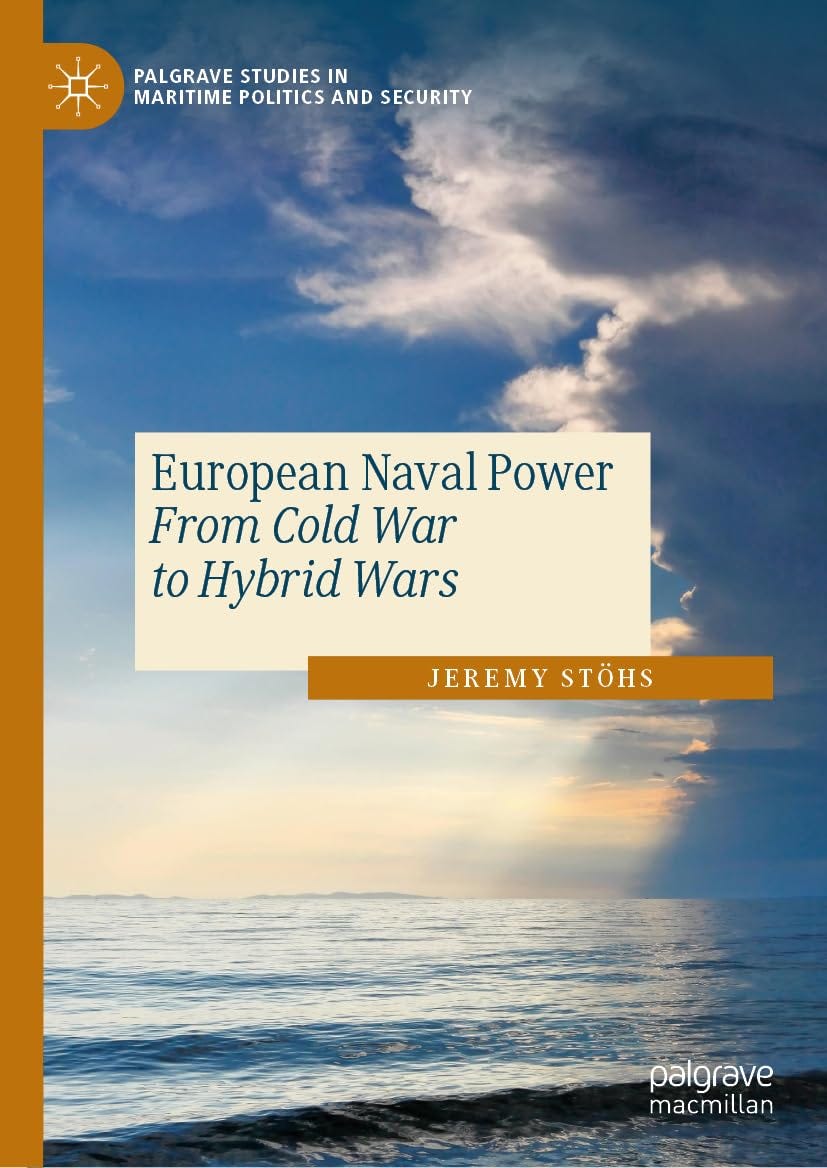How have the modern European navies developed since the start of the Cold War, and how are they positioned to address the challenges we see today?
Returning to Midrats this Sunday at 3pm Eastern will be Dr. Jeremy Stöhs.
Jeremy is an Austrian-American security and defense analyst. He co-heads the Austrian Center for Intelligence, Propaganda & Security Studies at the University of Graz and is a senior fellow at the Institute for Security Policy at Kiel University. His publications include The Decline of European Naval Forces: Challenges to Sea Power in an Age of Fiscal Austerity and Political Uncertainty (Naval Institute Press, 2018) and newly published European Naval Power: From Cold War to Hybrid Wars (Palgrave Macmillan, 2024).
The new book will be the focus of our discussion.
You can listen here or at the below:
Summary
The conversation explores the topic of European naval power, focusing on the development and evolution of European navies from the Cold War to the present. The guest, Dr. Jeremy Strohs, discusses his book on the subject and highlights the different approaches and methodologies used to analyze the naval forces of individual European countries. The conversation touches on themes such as the shift from state-centric competition to system-centric collaboration, the impact of the end of the Cold War on defense spending and capabilities, and the challenges faced by the European military-industrial complex. The decline of certain capabilities, such as submarine fleets, and the lack of investment in munitions and advanced weaponry are also discussed. The conversation explores the challenges and unique characteristics of the German Navy and the broader European naval landscape. It discusses the historical aversion to warfare in Germany and the impact of structural reforms on the German armed forces. The conversation also delves into the concept of collaborative system-centric navies and the need for Germany to have a strong national armed force while being part of NATO. The importance of interoperability and critical mass of capabilities in European navies is highlighted, as well as the role of the EU in maritime security.
Takeaways
European navies have undergone significant changes and adaptations since the end of the Cold War.
The shift from state-centric competition to system-centric collaboration has influenced the development and priorities of European navies.
The peace dividend era in the 1990s led to a decline in defense spending and capabilities, but the real decline happened during the 2000s.
The lack of investment in munitions and advanced weaponry is a challenge for European navies.
The European military-industrial complex has experienced consolidation and the loss of certain capabilities.
Different European countries have taken different approaches to naval development and have varying levels of strategic focus. Germany's historical aversion to warfare and structural reforms have had a significant impact on the German Navy.
Collaborative system-centric navies, like the German Navy, should aim to have a strong national armed force while being part of NATO.
Interoperability and critical mass of capabilities are crucial for European navies.
The EU plays a role in maritime security, but it cannot substitute NATO.
European navies need to focus on gaining a greater critical mass of capabilities and be able to hold their own in the European theater.
The European navies should also be able to deploy token capabilities to the Pacific to complicate strategic calculations.
The EU's coordinated maritime presence allows for easier transiting of forces and defensive operations.
European navies face challenges in dealing with kinetic threats and lack land strike capabilities.
There is a need for greater coordination and cooperation among European navies to address global trade and maritime security challenges.
Chapters
00:00: Introduction and Invitation to Join the Conversation
02:07: Exploring the Evolution of European Navies
03:58: Overview of the Book and its Methodology
08:57: The Shift from State-Centric Competition to System-Centric Collaboration
14:17: Contrasting Competitive and Collaborative Missions
19:10: The Impact of the Peace Dividend Era on Defense Spending
25:40: Challenges Faced by the European Military-Industrial Complex
28:09: Diverse Approaches to Naval Development in European Countries
33:30: The Challenges and Unique Characteristics of the German Navy
35:43: Collaborative System-Centric Navies and the Need for a Strong National Armed Force
37:06: Interoperability and Critical Mass of Capabilities in European Navies
39:26: The Role of the EU in Maritime Security
42:21: Gaining a Greater Critical Mass of Capabilities in European Navies
46:33: Deploying Token Capabilities to the Pacific to Complicate Strategic Calculations
53:23: The EU's Coordinated Maritime Presence for Easier Transiting of Forces
56:25: Challenges in Dealing with Kinetic Threats and Lack of Land Strike Capabilities
59:03: The Need for Greater Coordination and Cooperation Among European Navies





I thought that the Austrian Naval tradition ended when Capt. Ritter von Trapp declined a commission in the German Navy? 👍
I don’t seem to be able to access Mid-Rats anymore.